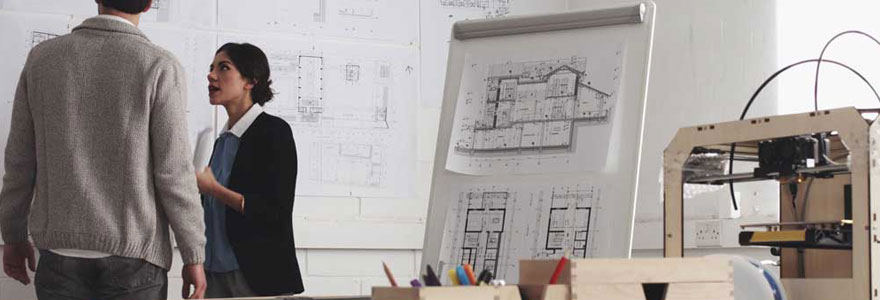Cap Antibes architecture company is a business organization registered, certified and licensed by the government to practice as an architecte legally. The construction process runs from the beginning to the end involving all types of architectural practices that require professional expertise offered by architectural companies. An architectural company employs qualified architecte professionals to practices and manage the companies’ services with consideration to the established business plan.
For an architectural organization to achieve its collective objective and provide satisfactory services to their clients, they have to employ professionals to perform different duties. These professions include:
1. Architect:
a person who devises absolute judgment in reviewing, selecting, and in designing buildings or other structures. He has the responsibility to offer solutions to problems faced and receive and give guidance on complex projects.
2. Project managers:
This is a qualified professional licensed by the architectural licensing board and has a bachelor’s degree in architecture. Project managers in an architectural firm oversee the company’s production activities by coordinating all the aspects of allocated projects and giving appraisal to the breadth of work as well as planning and monitoring the projects. The project manager has obligations to Prepares strategic plans for projects success and blends all the project exertion, administrative, and other factors to assure the most efficient and cost-friendly execution of allocated projects. The project manager plans and brings schedules, budgets, and breadth of work to completion for customer satisfaction. The project manager controls client budgets, schedules, communications and documentation, office administrative task and project team assignments.
3. Interior decorators:
Interior decorator is someone who determines the interior décor of a client’s house by researches, planning, designing, selecting and placing decorative materials like paint, art, and furniture. They meet their clients to understands how they want their space to feel and look. Their core responsibilities include meeting directly with the client, making decorative plans, selecting decorative materials, installing, managing the client’s budgets, and giving instructions to subcontractors. Interior decorators work to enhance the inner look of their client’s homes. They also provide the scope of the funding required to bring the house to life. Their role is different from that of an interior designer, whose objective is to improve the existing room and cannot make any architectural changes.
Roles of architectural companies during the construction of a building
Construction of a building is a process that takes one step after the other from the start to the end. Construction usually is a challenging task that clients evade by hiring professionals to execute on their behalf. A company that is hired to oversee a project in construction is responsible for all activities such as planning, estimating the budget, negotiating with contractors, and managing and monitoring the project. During the construction of a building various aspects comes into play such as managing the employees, meeting the daily targets, overseeing the usage of materials among others.
1. Discussing the project
Discussing the project is the first phase in the construction of any structure. An architectural company is hired by a client and provides an architect to develop a detailed design of an idea that the client intends to bring to existence. The client meets with the architect from the firm, discusses and comes up with some immediate preliminary plans. These are aspects such as sketches, diagrams and models, among other deliverables. Here the objective of the firm is to understand the client’s desires through an informative discussion and takes notes on their intention, and expectations are carefully taken. The client is given a rough estimation of the scope of the expected budget, safety and regulations.
2. Documenting and Drawing of sketches
The firms are responsible for creating a contingent drawing and doing experiments for the project’s feasibility. Usually, the firm professionals used to do this by hand, but since the introduction of technology, architectural firms can use various software to speed up the process drastically. During this phase, many revisions and redrawing are involved in order to add new developments that the client wants or to eliminate some details in case the budget and regulations are limiting. Afterward, a blueprint is produced to guide the contractor to deliver the intended structure and plans for all structural equipment, mechanical and electrical systems. Other documents are created together with the planned design and instructions with particular specifications for the contractor and builders.
3. Estimating the expected budget
The firm gives a scope of the estimated cost of different project phases that helps manage and control the client’s budget. The whole structure is visualized by the firm’s experts carefully and estimates the cost of labor, materials and construction time that the project will take to complete. This is done to avoid over budgeting or under budgeting, thus providing a practical cost estimation. The details provided by the company’s professionals on cost will depend entirely on the range of work.
4. Negotiations of Contracts
During the negotiation of contracts, the firm is responsible for choosing or suggesting contractors oversee the different construction activities. After all the tenders have been received, the firm conducts a well-detailed report, analyzes the results, and compares them to the client’s intention and budget.
5. Overseeing Construction phase
When construction begins, Antibes Architecture Company will be visiting the site, making meetings, performing negotiations with contracts and coming up with solutions to problems that may arise. The firm’s project manager in this stage is involved in all activities carried out around the construction site. During this stage of construction, the firm will have to sign a document that is required for approval. Throughout the construction period, the firm is involved in all activities until the end of the project. Almost towards the completion of the project, the firm’s interior decorator designs and places decorative materials in the house per the client’s desires. Before the company declares the project complete, they ensure that the building or structure satisfies the client and meets their expectations before the project commenced.
